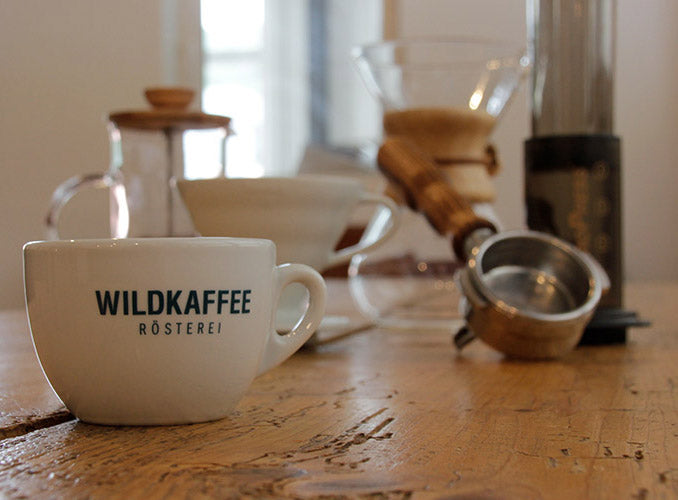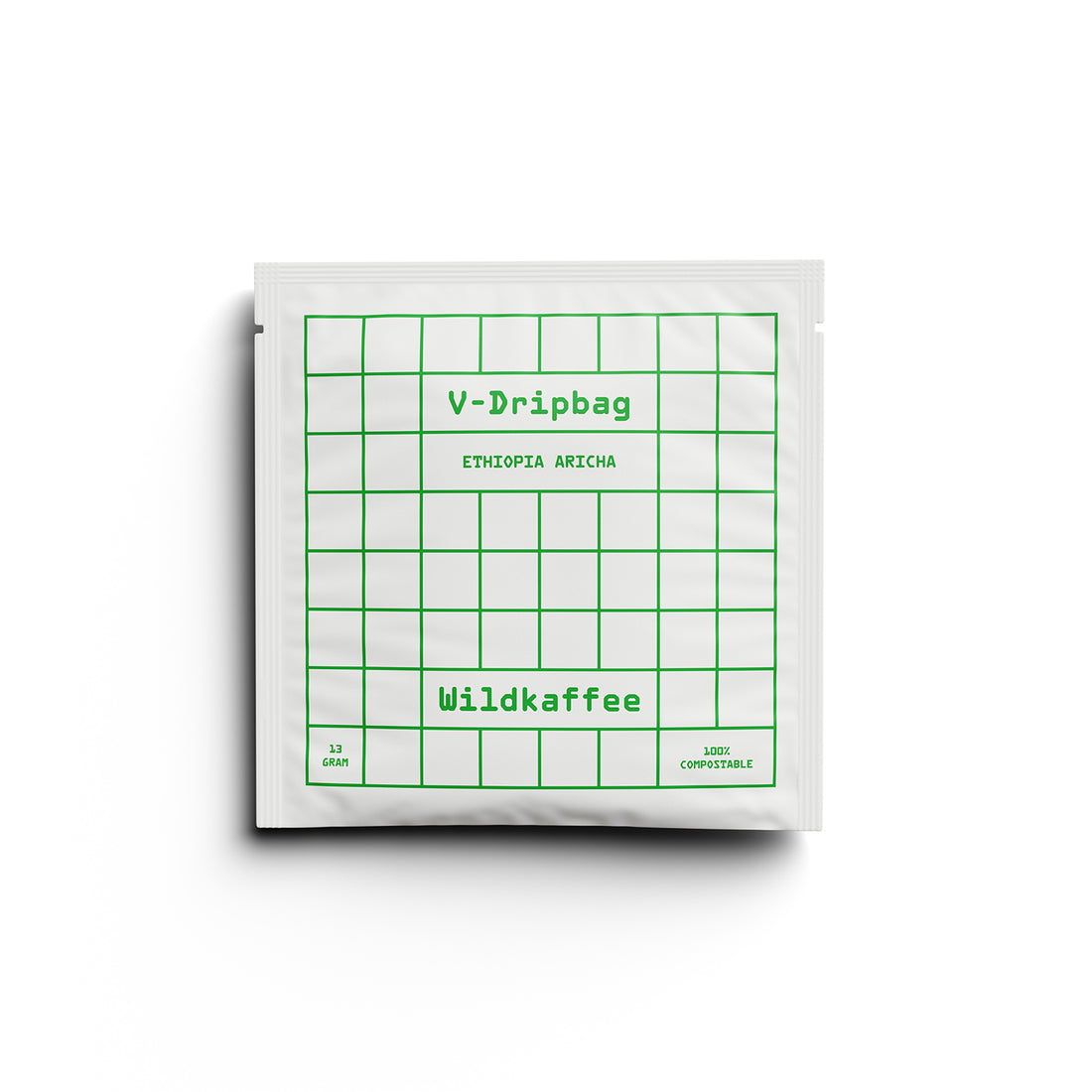Which coffee is best suited to which brewing method?
Roast level, pressure and recommendations 2025
Introduction: Why the brewing method determines the perfect coffee
Espresso, filter, pour-over, or fully automatic – each method extracts aromas differently. That's why not every bean is ideal for every brewing method. Understanding how roast level , pressure, processing, and grind size interact leads to better choices: less bitterness, more sweetness, clear cup profiles, and consistent results. In this guide, we clarify which coffee works best for portafilter machines , which coffee for filter coffee, and which roast level works best for espresso versus filter coffee – plus specific bean and recipe recommendations for 2025.
Understanding roast level: light, medium, dark – acidity, sweetness, bitterness
How the roast level affects the cup profile
Roasting levels control the balance of acidity, sweetness, body, and bitterness. The longer and hotter the roasting process, the more fruity acids break down and sugars caramelize – this increases body and bitterness but reduces clarity.
- Light roast : high clarity, lively acidity, floral/fruity notes; lighter body, more delicate in preparation.
- Medium roast : balanced sweetness, moderate acidity, round body; versatile in use.
- Dark roast: low acidity, high body, pronounced roasted aromas; can become bitter, but extracts easily.
The goal is a harmonious coffee profile: sweet, clean, without harshness. The right roast level makes this easier – it varies depending on the method.
Roast level vs. brewing method: Basic rules for espresso and filter coffee.
- Espresso (under pressure): preferably medium to dark roasts with high solubility and sweetness; light roast espresso is possible, but requires precise tuning.
- Filter (without pressure): preferably light to medium roasts for transparency; dark roasts in a filter quickly become dull or bitter.
Note: There is no rigid distinction between espresso beans and filter beans – the roast profile and recipe are crucial. Nevertheless, a method-specific roast level significantly facilitates extraction.
Pressure vs. no pressure: Espresso vs. filter explained
Extraction under pressure ( portafilter , fully automatic)
At around 9 bar pressure, many soluble components are extracted in a short time. This brings intensity, body, and crema – but increases the risk of over- or under-extraction. Beans with sufficient solubility (usually medium/ dark roasts or blends with Robusta) are more forgiving.
- Portafilter : maximum control over grind size, ratio, temperature, flow.
- Fully automatic coffee machine : more convenience, but sensitive to oily, very dark beans.

Gravity methods (Hario V60, Moccamaster)
Here, the water flows by gravity. The longer contact time and reduced turbulence emphasize clarity and sweetness when the coffee is lightly roasted. Beans that are too dark often result in bitterness and shallow cups.
- Hario V60/Handfilter : manual control over flow, bloom, turbulence – ideal for complex, light coffees.
- Moccamaster : constant temperature and flow; medium-light to medium roasts produce balanced, sweet filter cups.
The right coffee for each method: specific recommendations
Portafilter/Espresso : Roast level, blends, Robusta content
- Roast level: medium to medium-dark for sweetness and body without burnt notes.
- Blends: 100% Arabica for clarity; Arabica-Robusta espresso with 10–30% Robusta for more crema, punch and stability.
- Single Origins: possible, especially with medium roasts from Brazil , Colombia, Guatemala , India.
- Light roast espresso: works with a higher brewing temperature, finer grind, longer extraction ratio (e.g., 1:2.5 to 1:3); the result is fruitier, more acidic. Like our Kenya Washed AB.
Are you specifically looking for "which coffee for an espresso machine?"? – Start with a dark-roasted blend with natural sweetness (nut, chocolate), 0–20% Robusta depending on your desired crema. Like our Bergsonne (without Robusta) or our Out of the Dark (with 30% Robusta).
Fully automatic coffee machine : avoid oily beans, choose medium roast
Fully automatic coffee machines prefer dry surfaces. Very dark, oily beans clog the grinding unit and lead to off-flavors.
- Recommendation: medium roast , fully automatic coffee machine with a rounded sweetness and low acidity (Brazil, Peru, mild Central America).
- Recommended coffee machine beans: balanced blends of 100% Arabica or 10% Robusta for crema – avoid highly oily espresso roasts. Examples include Wilde Milde or Brasil Capim Branco .
Hario V60/Handfilter : light roast, clear flavor focus
- Roast: light to medium light for floral, fruity clarity.
- Origins: Ethiopia , Kenya , Rwanda, Colombia (washed or honey) for precise acidity and sweetness. Find more exciting light roasts here.
- Hario V60 coffee beans: look for fresh harvesting, clean processing and transparent origin.
Moccamaster: medium-light to medium roast , balanced
“Moccamaster which beans?” – Coffees with good sweetness and moderate acidity work most reliably.
- Roast: medium-light to medium, no oily espresso roasts.
- Profile: Nutty, milk chocolate, red fruits; clear, but not sharp.
- Origin: Brazil (natural), Colombia (washed), Guatemala (washed), blend with a light fruity note.

Processing (Washed, Natural, Honey) and its influence
The processing method strongly influences the aroma – often just as important as the degree of roasting.
Which preparation method is best for espresso?
- Natural: more sweetness, density, body – very suitable for espresso and cappuccino .
- Honey: in between; sweet, round, often with a velvety body.
- Washed: clear, structured cups; medium roast is great for precise espressos.
Which filter preparation method ?
- Washed vs Natural Coffee: washed coffee delivers clarity and vibrant acidity – ideal for V60.
- Natural: rounder, sweeter, often berry-like; appears fuller in the filter, but can be heavy.
- Honey: balanced, pleasantly sweet, a good all-rounder.
Grind size, water and recipe: Fine-tuning for each setup
Recipe beats myth. With clean water , the right grind, and stable parameters, you'll reach your target profile faster.
- Grind setting for portafilter: finer for lighter roasts and longer ratio, coarser for dark roasts or shorter ratio.
- Espresso starting recipe: 1:2 in 25–30 s at 93–95 °C; light: 1:2.5–1:3 and 94–96 °C.
- V60 starter recipe: 15 g coffee to 250 g water, 2:15–2:45 min; 45 g bloom/30 s, then two to three even infusions.
- Moccamaster: 60 g/L, medium grind, 92–96 °C; rinse paper filter, fill evenly.
- Water: Total hardness 50–120 ppm, alkalinity 30–50 ppm; this allows acidity in coffee to be reduced without losing sweetness.
- If bitter: grind coarser, lower temperature, increase ratio; if sour/thin: grind finer, increase temperature, longer contact time.
Seasonal recommendations: Summer and winter profiles
- Summer: light to medium roasts with citrus, stone fruit, and floral notes; great as a V60, iced filter, or light espresso for sparkling milk drinks.
- Winter: medium roasts with chocolate, nut, caramel; natural or honey preparation for more body in the cappuccino or moccamaster.
Buying advice and examples: Bean recommendations for each preparation method
For portafilters
- Blend (80–100% Arabica, 0–20% Robusta), medium roasted: notes of hazelnut, milk chocolate, caramel; stable crema, sweet in cappuccino.
- Single Origin Brazil (natural), medium: cocoa, almond, light red fruit – very approachable.
- Modern light roast (Ethiopia washed): citrus, jasmine; extract as 1:2.5–1:3, higher temperature.
For fully automatic
- Medium roast, dry bean surface, 100% Arabica: gentle sweetness, mild acidity; no oily, very dark roasts.
- Slight Robusta content (10%): a little more crema and punch, without tasting bitter.
- Profile: Milk chocolate, caramel, mild nut; avoid strongly fruity, very light roasts.

For Hario V60/Hand Filter
- Light roast, washed: Ethiopia or Kenya with floral/berry notes for brilliant clarity.
- Medium-light, honey: Colombia or Costa Rica for balanced sweetness and clean acidity.
- Hario V60 coffee beans: pay attention to the harvest year, farm information, and roast freshness (2–6 weeks).
For Moccamaster
- Medium to medium: Guatemala (washed) with red apple, nougat; Brazil (natural) with milk chocolate, nut.
- Blends with light fruit and lots of sweetness; avoid very dark, oily espresso roasts.
Common Errors and Troubleshooting
- Beans that are too dark in the filter taste bitter/dull – switch to a lighter roast, grind coarser, shorter contact time.
- Too light a roast in a fully automatic coffee machine : tastes thin/sour – use medium roast, increase brewing temperature, grind finer (if possible).
- Channeling in the portafilter : uneven extraction – improve distribution, use WDT, tamper straight, adjust dose to the filter basket.
- Oily beans in the fully automatic coffee machine: grinder clogged – switch to dry roasted beans, clean the machine.
- Bitter espresso: too hot/too fine/too long – lower the temperature, grind coarser, shorter ratio (1:2).
- Sour espresso: too cold/too coarse/too short – hotter, finer, longer ratio (1:2.3–1:2.5).
Next steps: Try a medium-light filter roast in a V60 and a medium espresso roast in a portafilter, document recipes, and adjust one parameter at a time. Then, read up on water chemistry, flow profiling, and preparation methods. #staywild




